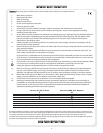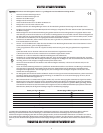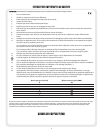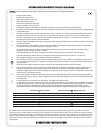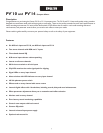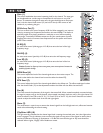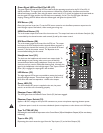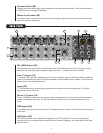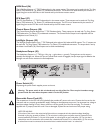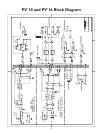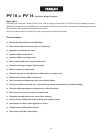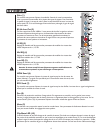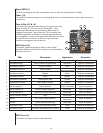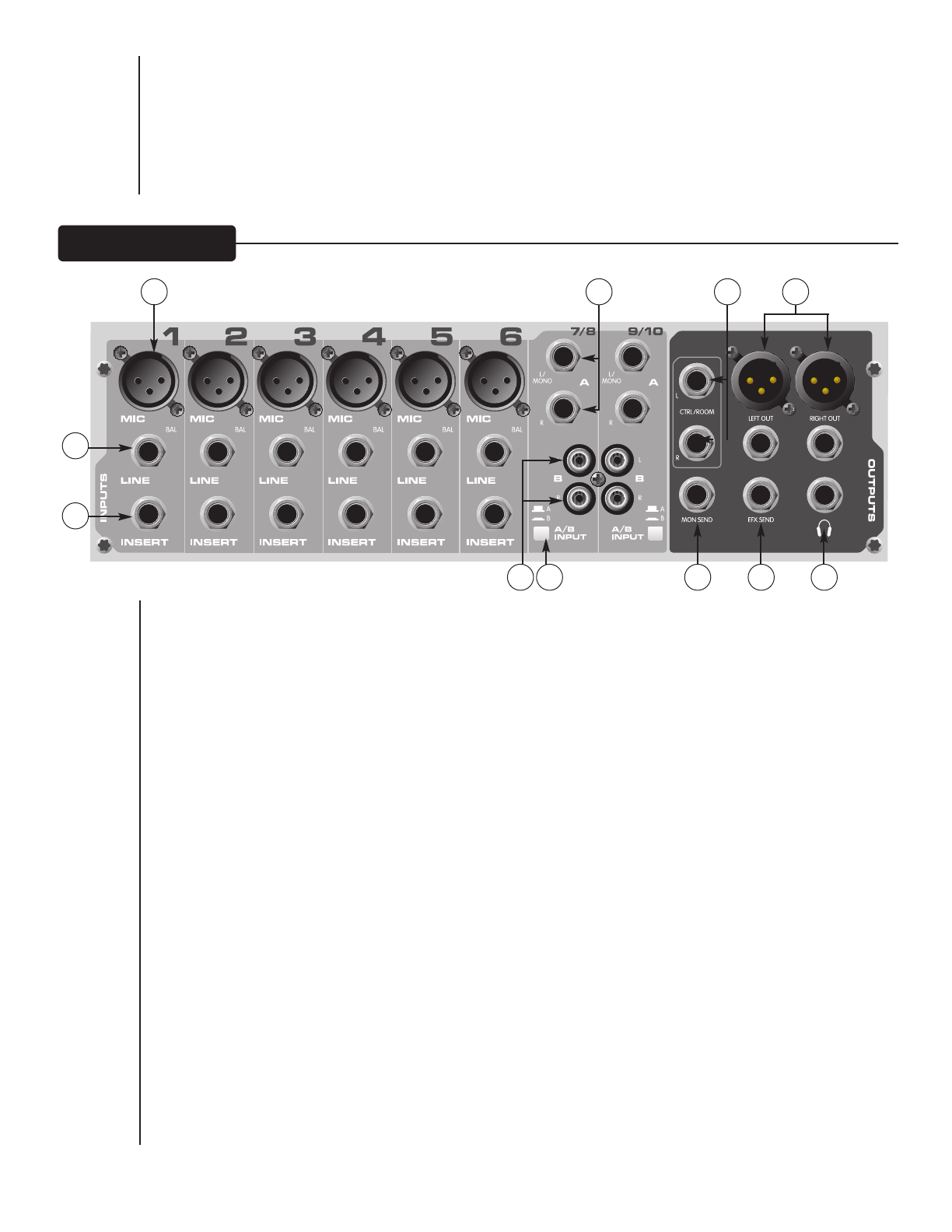
Contour Switch (28)
Engaging this switch enhances the signal by adding both bass and treble frequencies. This is especially effective
at lower volumes or for tape/CD playback.
Master Level Faders (29)
The Master Faders control the levels sent to the main left/right outputs. Best results are obtained when these
controls are set near the 0 point.
Mic (XLR) Inputs (30)
XLR balanced inputs optimized for a microphone or other low impedance source. Pin 2 is the positive input.
Because of the wide range of gain adjustment, signal levels up to +14 dBu can be accommodated.
Line (
1
⁄4”) Inputs (31)
1
⁄4” balanced (TRS) 10 k Ohm impedance input. The tip is the positive input and should be used for unbalanced
inputs. It has 20 dB less gain than the XLR input and does not have phantom power available. The Mic and Line
inputs should not be used simultaneously.
Insert (32)
1
⁄4” TRS connector allows external signal processors to be inserted into the channel signal path. Tip=Send;
Ring=Return; Sleeve=Ground.
Stereo (
1
⁄4") Inputs (33)
These
1
⁄4" unbalanced inputs work as a stereo line input using both jacks or as a mono input if the connection is
made to the left/mono input only. The A/B input selector must be in the "A" position for these jacks to be
active.
RCA Inputs (34)
These RCA inputs work as stereo line inputs. The A/B input selector must be in the "B" position for these jacks
to be active.
A/B Switch (35)
The A/B input selector switch expands the capability of the PV
®
10 and the PV
®
14 mixers by allowing two
stereo sources to be connected to each stereo line input. Instead of repatching, the switch selects which input
jacks are active.
11
RR EE AA RR PP AA NN EE LL
30
31
32
33
34
35
38
36 37
39
40



